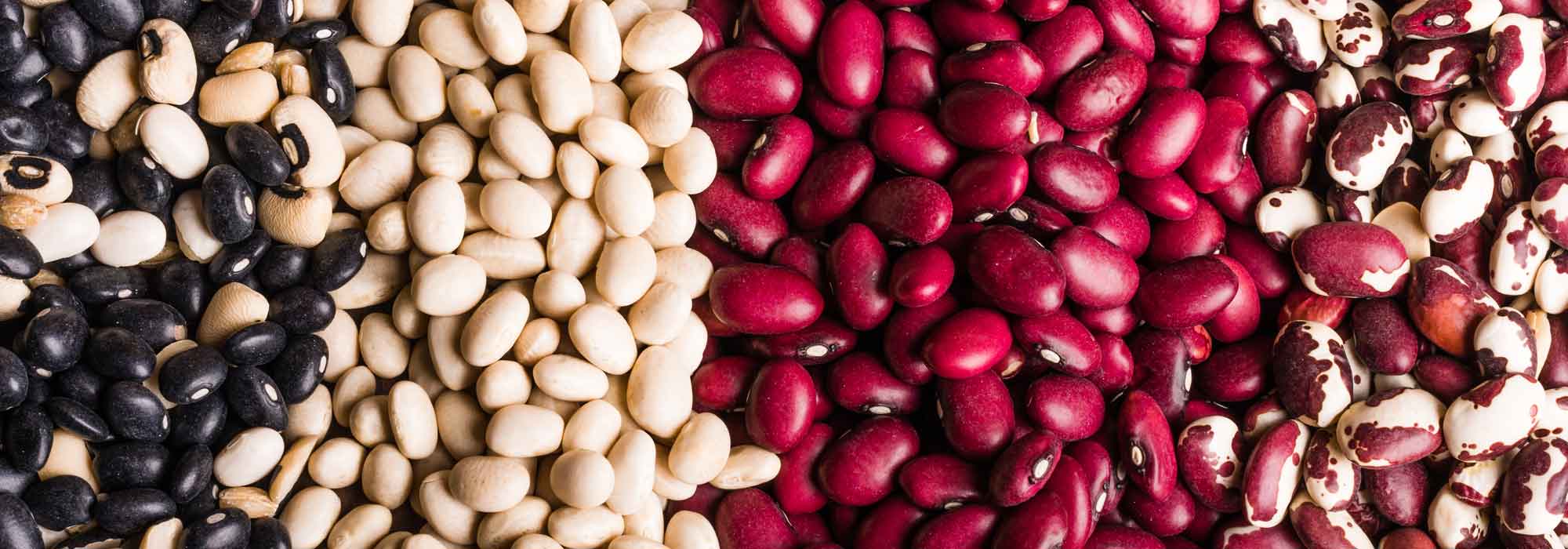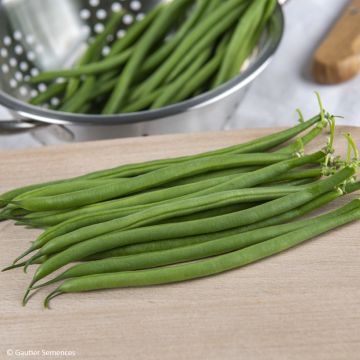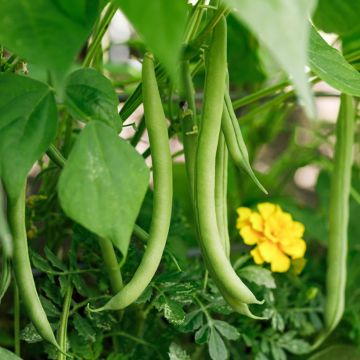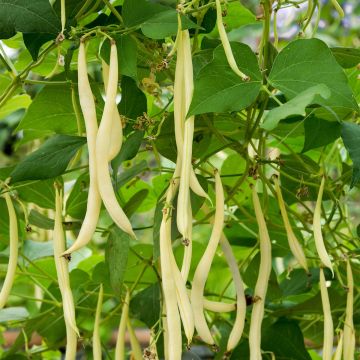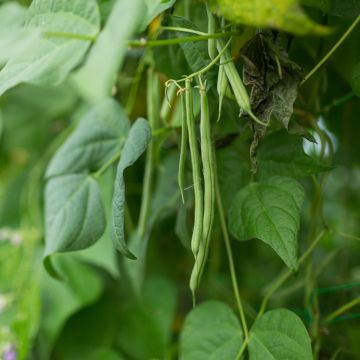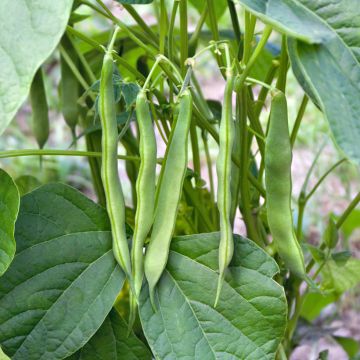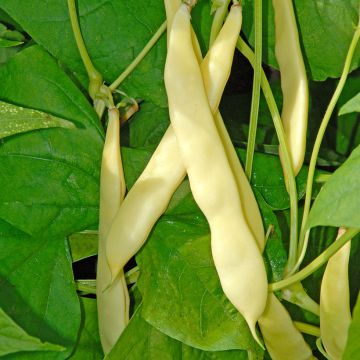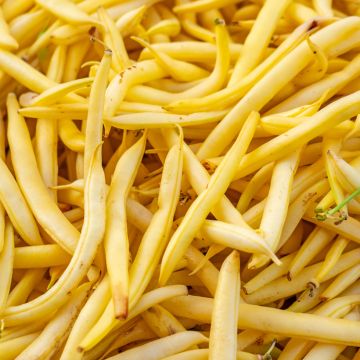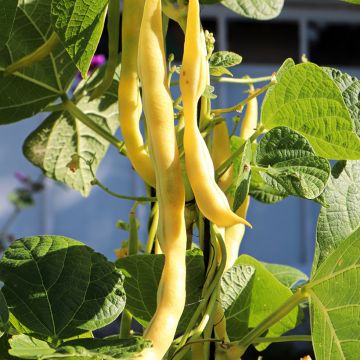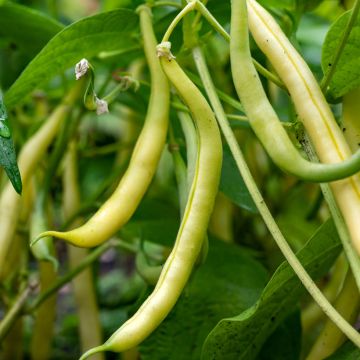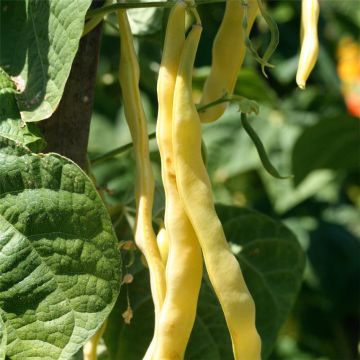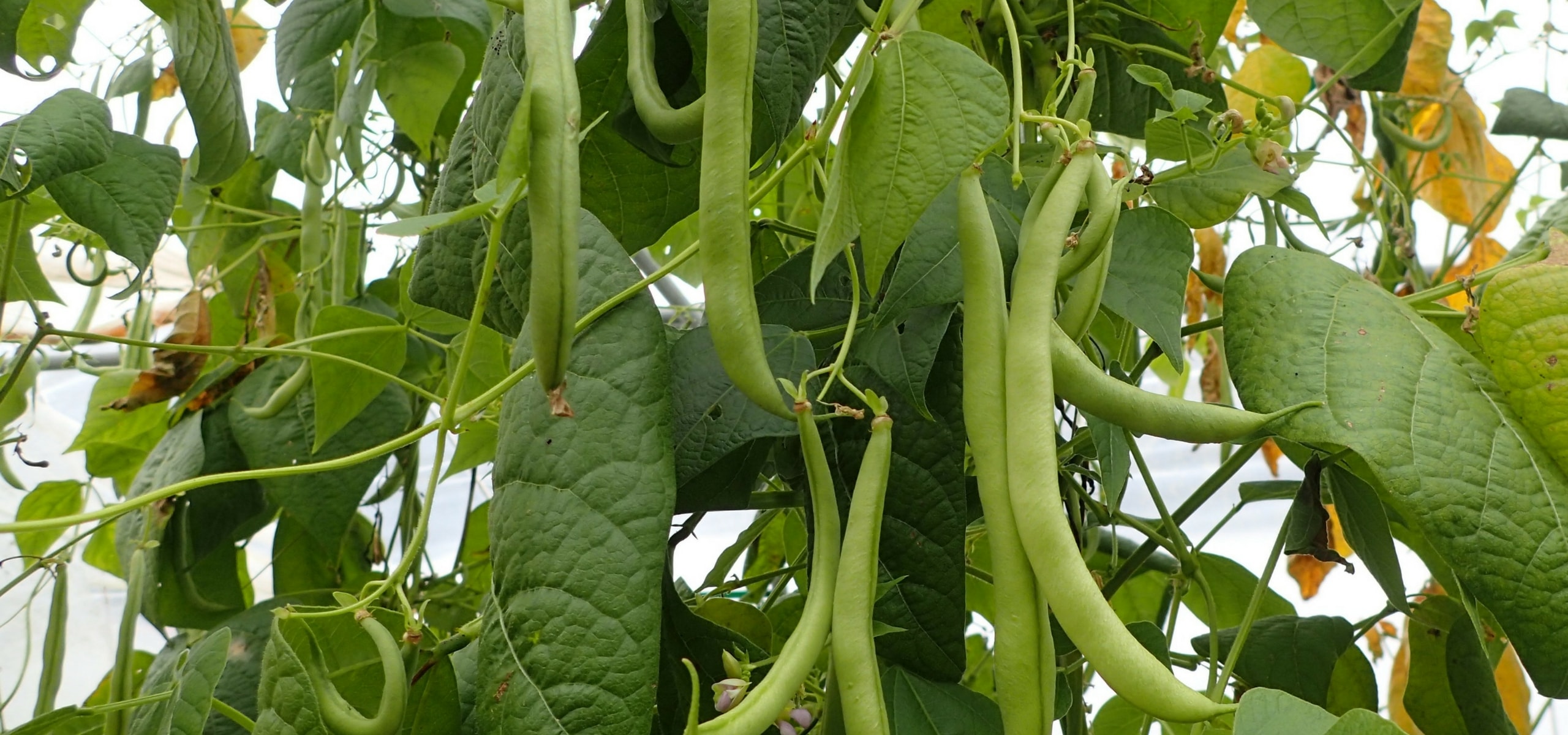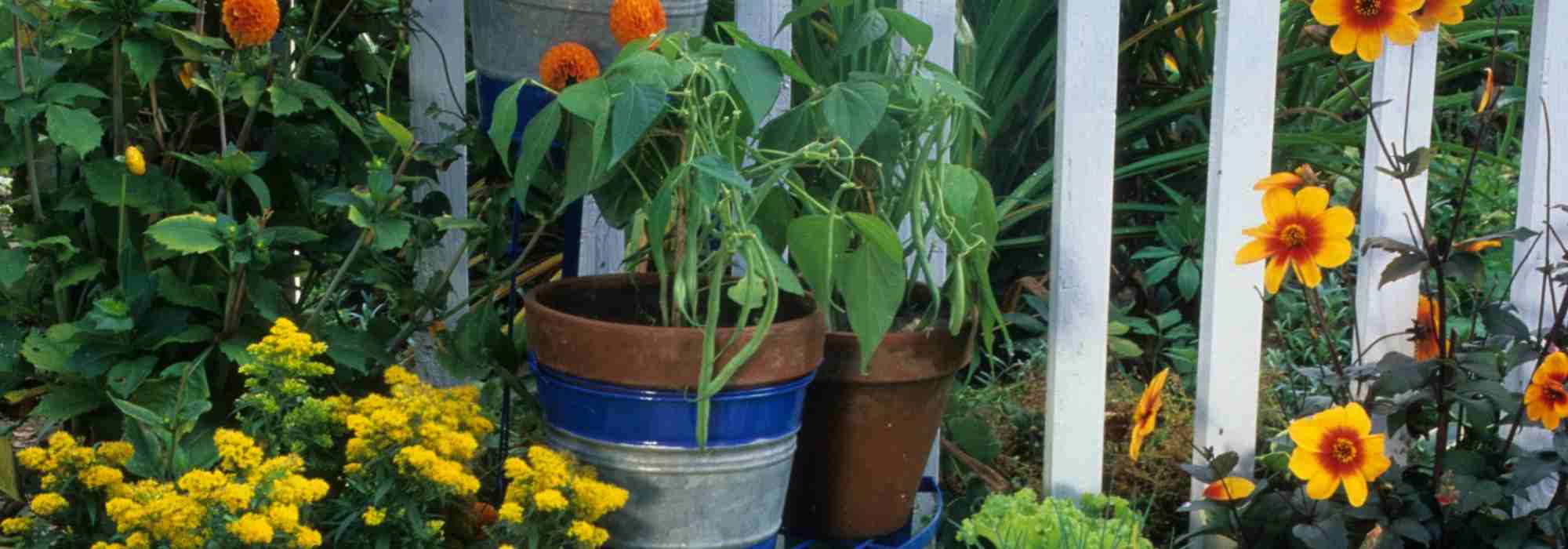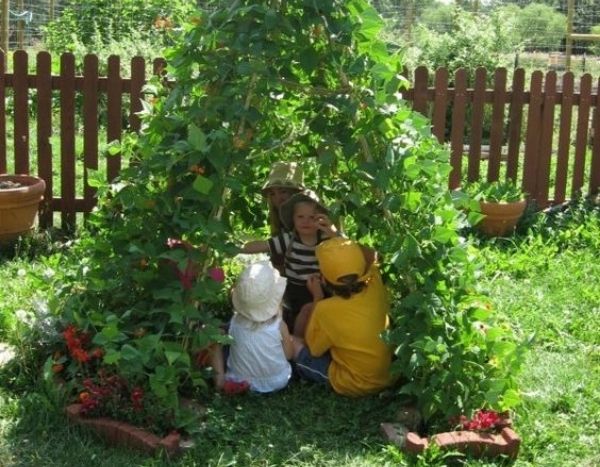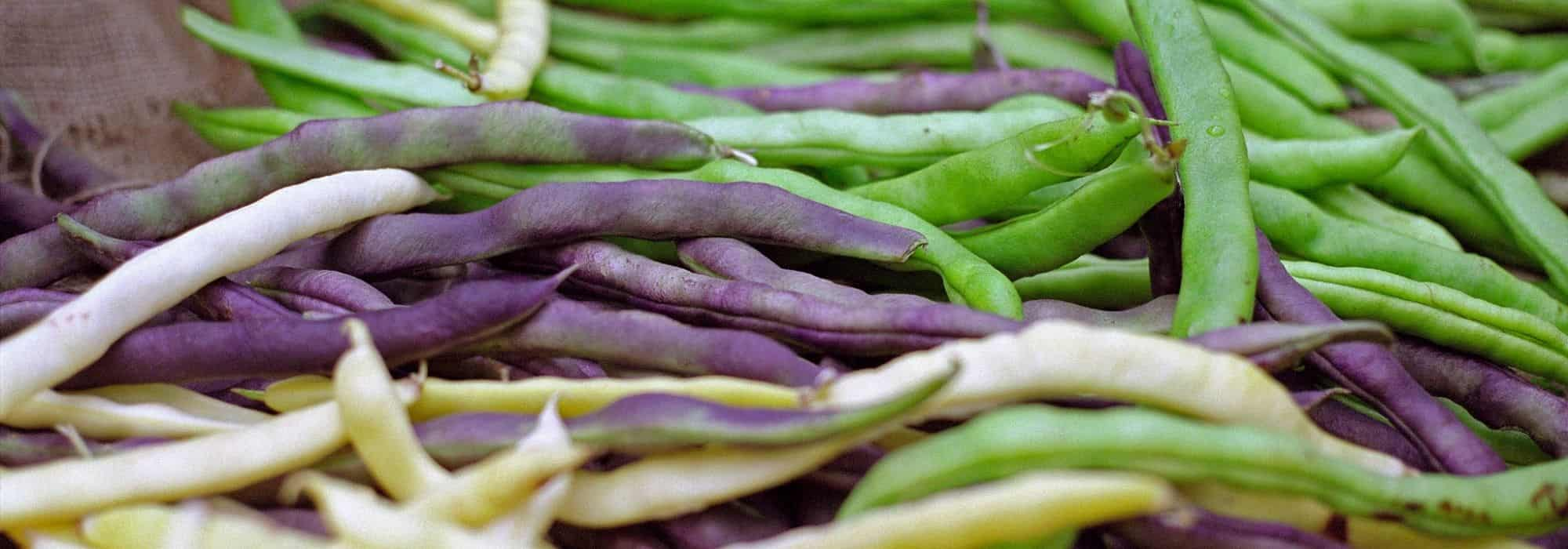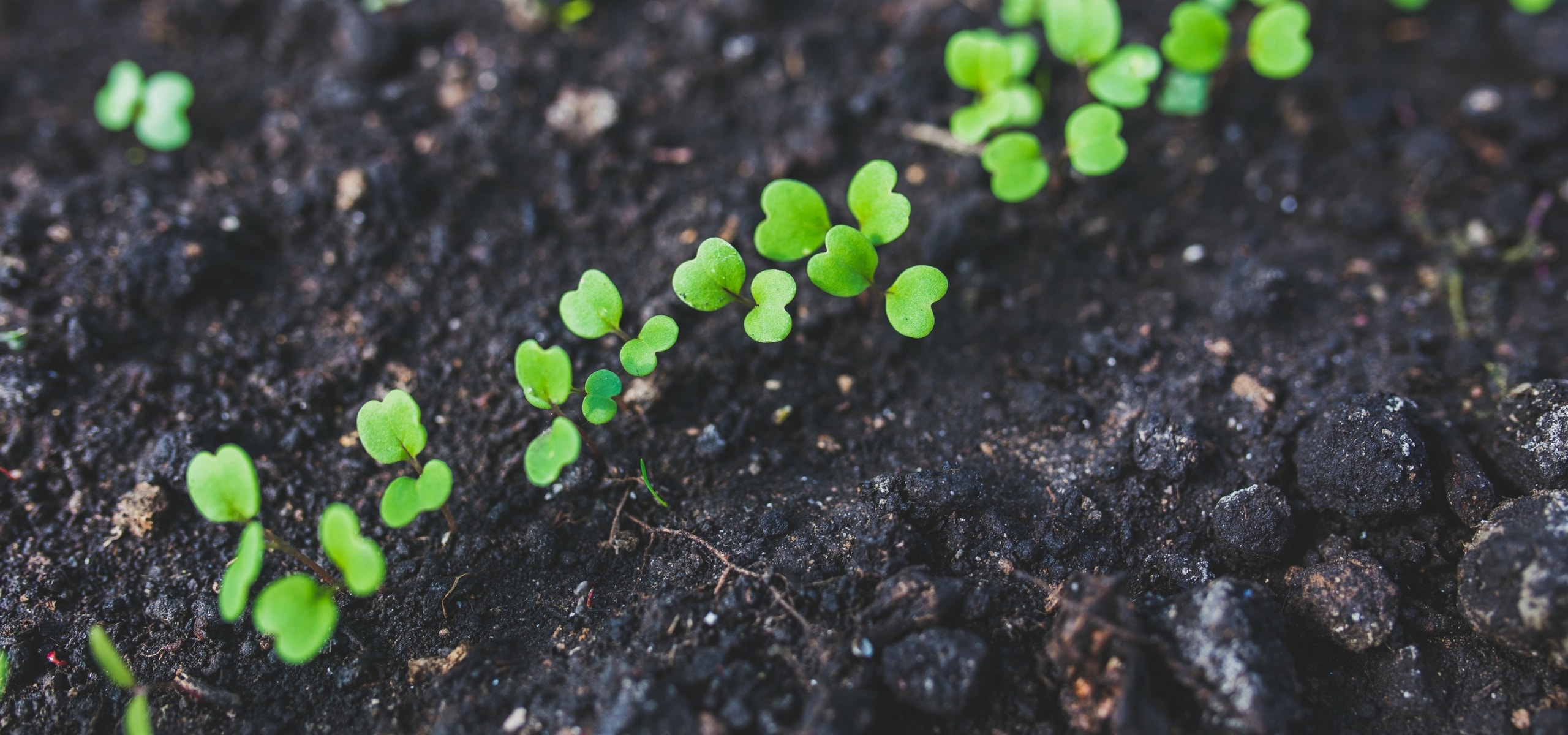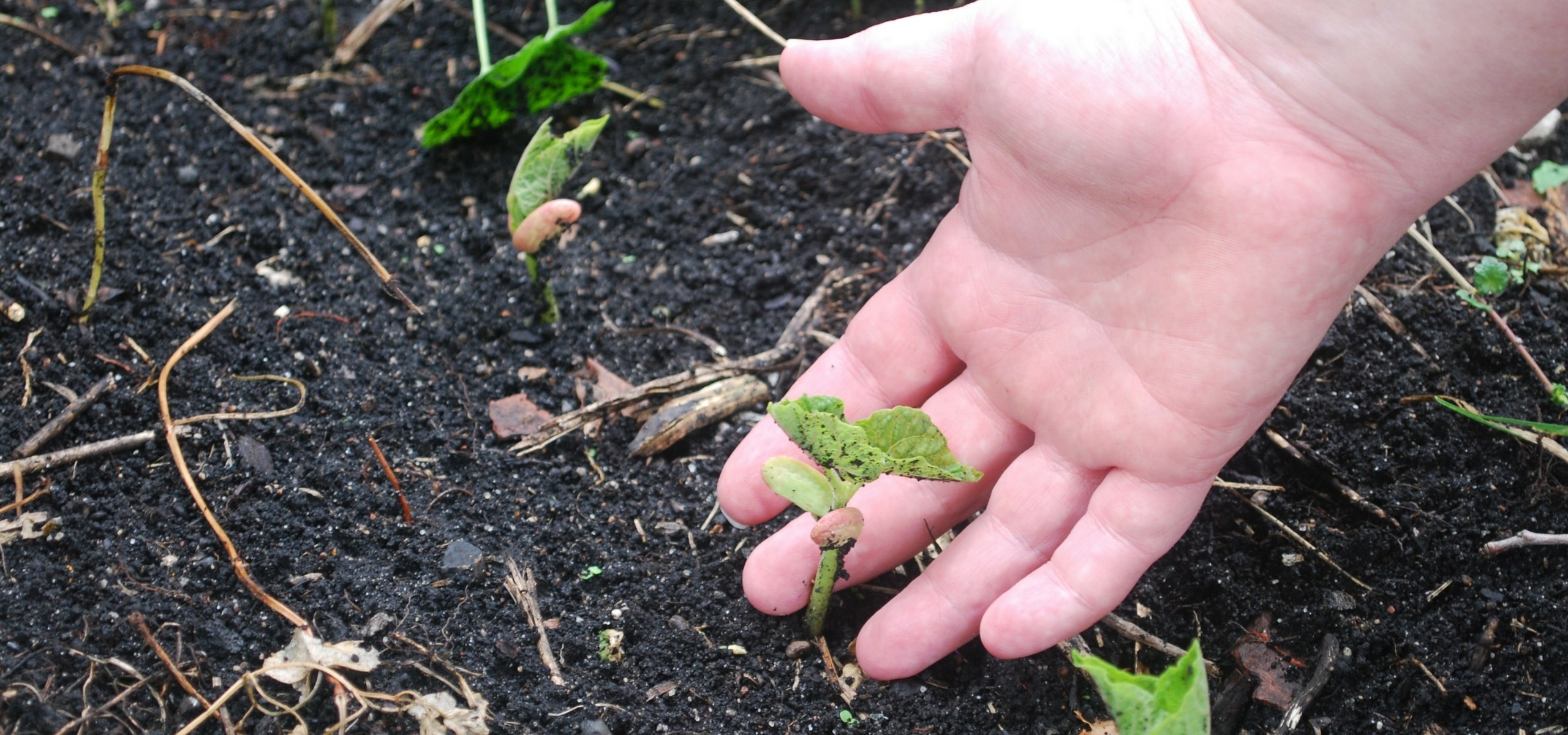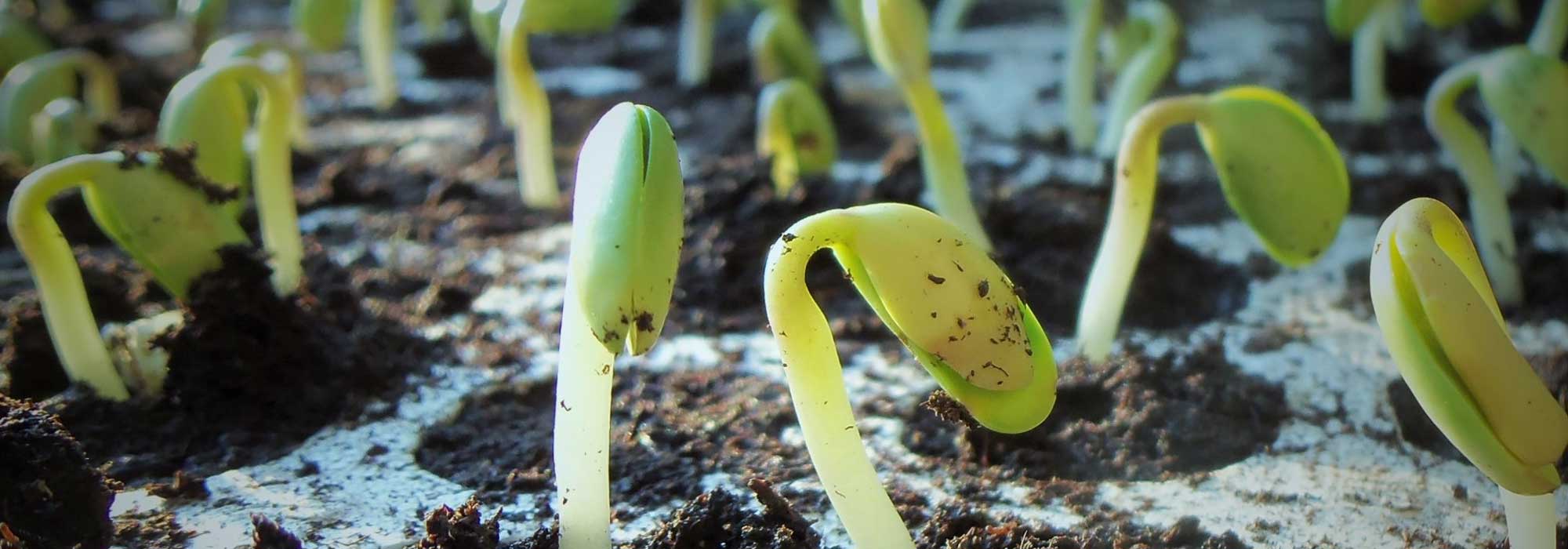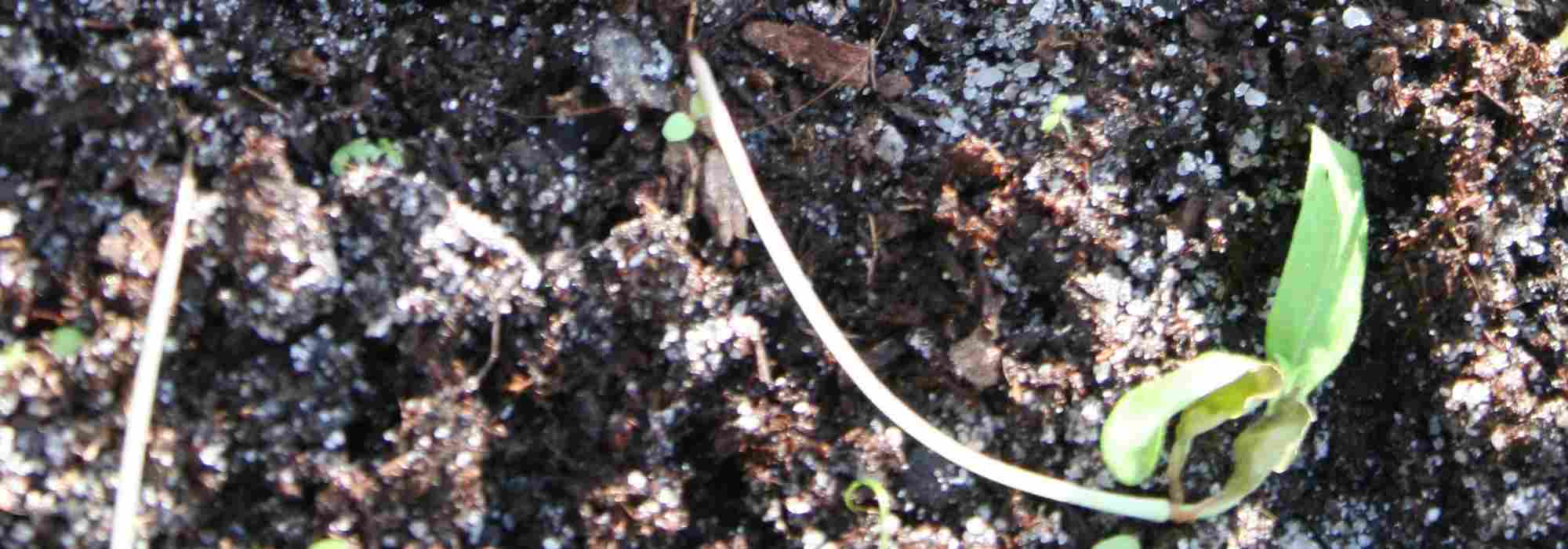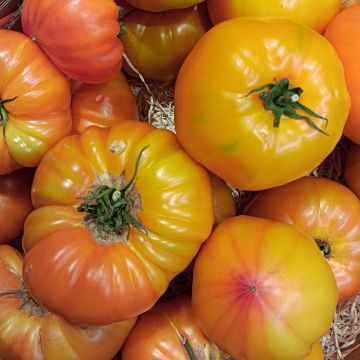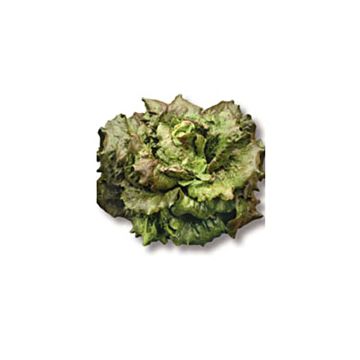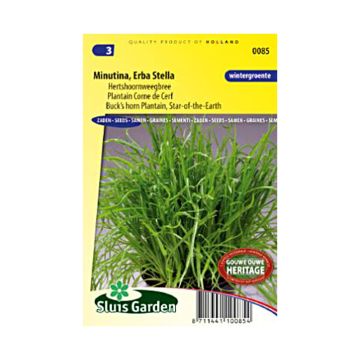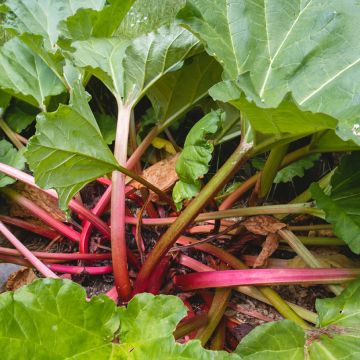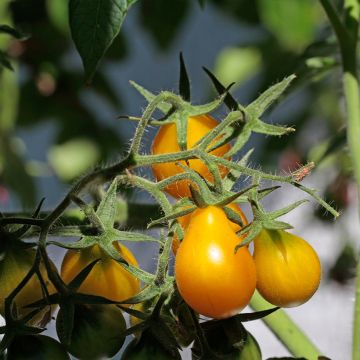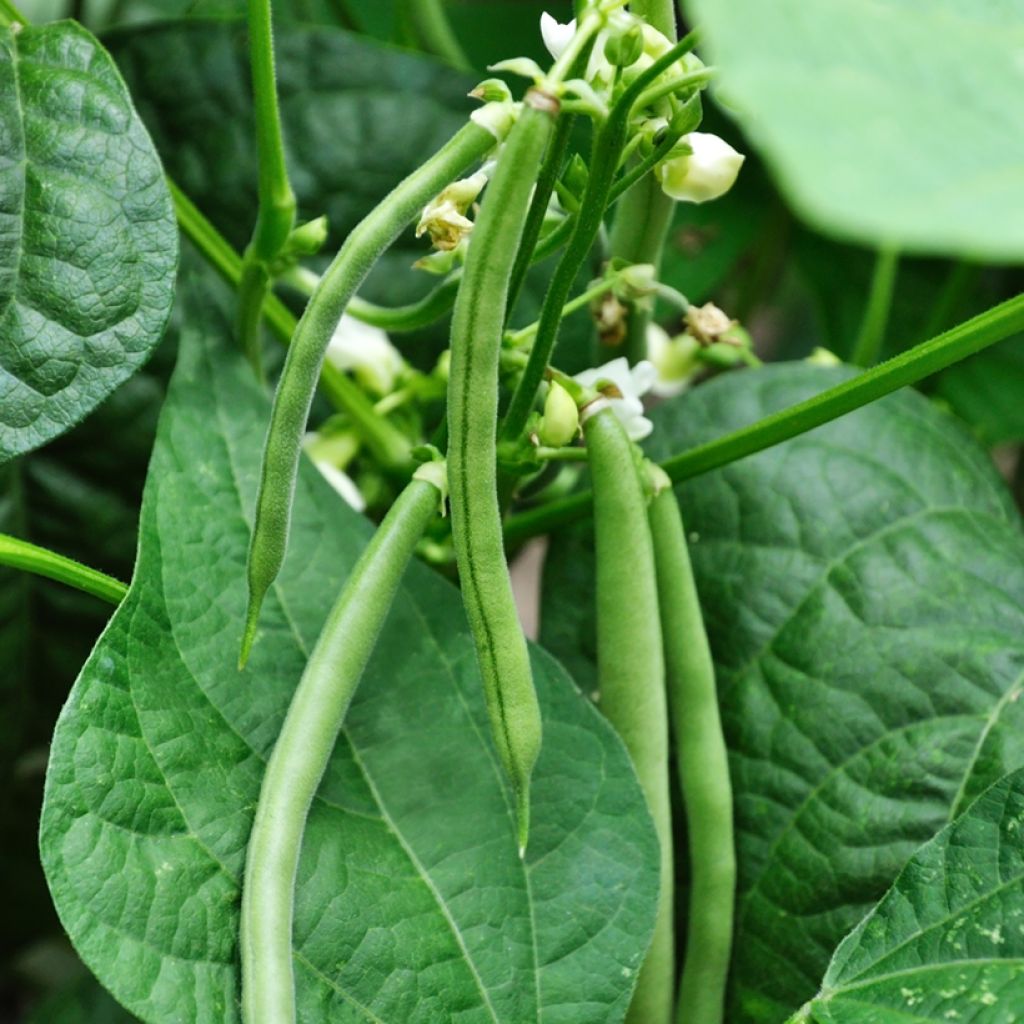

Climbing bean mangetout Neckarkonigin seeds
Climbing bean mangetout Neckarkonigin seeds
Phaseolus vulgaris Neckarkonigin
Climbing French bean
Special offer!
Receive a €20 voucher for any order over €90 (excluding delivery costs, credit notes, and plastic-free options)!
1- Add your favorite plants to your cart.
2- Once you have reached €90, confirm your order (you can even choose the delivery date!).
3- As soon as your order is shipped, you will receive an email containing your voucher code, valid for 3 months (90 days).
Your voucher is unique and can only be used once, for any order with a minimum value of €20, excluding delivery costs.
Can be combined with other current offers, non-divisible and non-refundable.
Home or relay delivery (depending on size and destination)
Schedule delivery date,
and select date in basket
This plant carries a 6 months recovery warranty
More information
We guarantee the quality of our plants for a full growing cycle, and will replace at our expense any plant that fails to recover under normal climatic and planting conditions.
Description
The 'Neckarkönigin' French bean is a dwarf, yet vigorous variety derived from the famous German variety 'Phenomenon'. Its long green and flat pods, with a round section, can reach up to 30 cm. Harvested young, they are enjoyed as snap beans, tender and flavoursome. Perfect for Asian recipes, these pods are ideal stir-fried in a wok and cut into small pieces of 2 to 3 cm. However, the 'Neckarkönigin' is particularly prized for its white seed, harvested as the pods ripen later. This hardy variety offers a generous yield, even under challenging weather conditions. Sow between May and June, with a harvest from July to October.
The bean, whether grown for its pods or seeds, is highly appreciated in gardens due to its ease of cultivation. It is particularly reliable, allowing for a first harvest approximately 60 days after sowing. Originating from the New World and acclimatised in Europe since the 16th century, the bean has become an essential legume worldwide. While Native Americans cultivated it for its dried seeds, it was the Italians who popularised the consumption of immature pods in the 18th century.
Beans can be climbing (pole) or dwarf (without support), but all varieties have tendrils that twine around a support. The pods are generally green, but some varieties can be yellow (wax beans), striped with red, or even amethyst.
The snap bean is consumed whole, pods and seeds, even when ripe. Modern varieties of snap-pod beans are stringless and can be enjoyed at various stages, from young to more fleshy.
Immature pods are rich in vitamins A, B9, C, as well as trace elements and minerals. Dry beans are also a valuable source of plant proteins.
Harvest: Harvesting of young pods begins approximately 60 days after sowing. For fresh seeds, harvest before the pods dehydrate. Harvesting of dry seeds is done by hanging the plant in a dry place, then shelling the seeds as needed.
To preserve pods, freezing is the most common preservation method: blanch the pods for 5 to 6 minutes, cool them in ice water, then dry before freezing. Canning is also making a comeback for its taste quality.
Beans, like all Fabaceae, enrich the soil with nitrogen, helping to regenerate soils. They integrate well into crop rotation or companion planting with corn and squashes, a beneficial association called Milpa. They also pair well with aubergines, carrots, and potatoes, but avoid alliums and fennel.
Harvest
Plant habit
Foliage
Botanical data
Phaseolus
vulgaris
Neckarkonigin
Fabaceae
Climbing French bean
Cultivar or hybrid
Annual
Other Snap Beans
View all →Planting and care
Soil preparation: Beans like light, moist but not wet soils, rich in nutrients. However, they do not like soils that are too chalky or too acidic. It is therefore important to prepare the soil well by deep digging to a depth of 20 cm without turning the soil. Then add compost or well-rotted manure. Do not sow beans on soil that has been recently limed, as this causes hardening and loss of the pod's taste quality.
Sowing under glass: Under glass or in tunnels, bean sowing can start from mid-March. Beans are sensitive to cold, requiring a minimum soil temperature of 15°C. The glasshouses should be facing South or West. Only ventilate them during the hottest hours of the day. Remove the protections only when frost is no longer a concern.
Sowing in open ground: Sow from April in southern regions or from May once the soil has warmed up enough and frost is no longer a concern. Dig furrows 3 to 4 cm deep, spaced 40 cm apart. Sow your seeds spacing them 5 to 7 cm apart or in clusters of 4 to 5 seeds spaced 40 cm apart in all directions. Cover the soil and lightly tamp down with a rake. When the plants reach a height of 20 cm, earth up the plants so they are well supported.
The first harvests take place approximately 60 days after sowing, until the end of October. You can sow beans every 15 days for a continuous harvest until the end of autumn.
There are different types of support for climbing beans: the Canadian tent frame, teepee, on nets or grids. Any tall element can become the support for this type of bean, for a very aesthetic appearance.
Seedlings
Care
Intended location
Planting & care advice
This item has not been reviewed yet - be the first to leave a review about it.
Similar products
Haven't found what you were looking for?
Hardiness is the lowest winter temperature a plant can endure without suffering serious damage or even dying. However, hardiness is affected by location (a sheltered area, such as a patio), protection (winter cover) and soil type (hardiness is improved by well-drained soil).

Photo Sharing Terms & Conditions
In order to encourage gardeners to interact and share their experiences, Promesse de fleurs offers various media enabling content to be uploaded onto its Site - in particular via the ‘Photo sharing’ module.
The User agrees to refrain from:
- Posting any content that is illegal, prejudicial, insulting, racist, inciteful to hatred, revisionist, contrary to public decency, that infringes on privacy or on the privacy rights of third parties, in particular the publicity rights of persons and goods, intellectual property rights, or the right to privacy.
- Submitting content on behalf of a third party;
- Impersonate the identity of a third party and/or publish any personal information about a third party;
In general, the User undertakes to refrain from any unethical behaviour.
All Content (in particular text, comments, files, images, photos, videos, creative works, etc.), which may be subject to property or intellectual property rights, image or other private rights, shall remain the property of the User, subject to the limited rights granted by the terms of the licence granted by Promesse de fleurs as stated below. Users are at liberty to publish or not to publish such Content on the Site, notably via the ‘Photo Sharing’ facility, and accept that this Content shall be made public and freely accessible, notably on the Internet.
Users further acknowledge, undertake to have ,and guarantee that they hold all necessary rights and permissions to publish such material on the Site, in particular with regard to the legislation in force pertaining to any privacy, property, intellectual property, image, or contractual rights, or rights of any other nature. By publishing such Content on the Site, Users acknowledge accepting full liability as publishers of the Content within the meaning of the law, and grant Promesse de fleurs, free of charge, an inclusive, worldwide licence for the said Content for the entire duration of its publication, including all reproduction, representation, up/downloading, displaying, performing, transmission, and storage rights.
Users also grant permission for their name to be linked to the Content and accept that this link may not always be made available.
By engaging in posting material, Users consent to their Content becoming automatically accessible on the Internet, in particular on other sites and/or blogs and/or web pages of the Promesse de fleurs site, including in particular social pages and the Promesse de fleurs catalogue.
Users may secure the removal of entrusted content free of charge by issuing a simple request via our contact form.
The flowering period indicated on our website applies to countries and regions located in USDA zone 8 (France, the United Kingdom, Ireland, the Netherlands, etc.)
It will vary according to where you live:
- In zones 9 to 10 (Italy, Spain, Greece, etc.), flowering will occur about 2 to 4 weeks earlier.
- In zones 6 to 7 (Germany, Poland, Slovenia, and lower mountainous regions), flowering will be delayed by 2 to 3 weeks.
- In zone 5 (Central Europe, Scandinavia), blooming will be delayed by 3 to 5 weeks.
In temperate climates, pruning of spring-flowering shrubs (forsythia, spireas, etc.) should be done just after flowering.
Pruning of summer-flowering shrubs (Indian Lilac, Perovskia, etc.) can be done in winter or spring.
In cold regions as well as with frost-sensitive plants, avoid pruning too early when severe frosts may still occur.
The planting period indicated on our website applies to countries and regions located in USDA zone 8 (France, United Kingdom, Ireland, Netherlands).
It will vary according to where you live:
- In Mediterranean zones (Marseille, Madrid, Milan, etc.), autumn and winter are the best planting periods.
- In continental zones (Strasbourg, Munich, Vienna, etc.), delay planting by 2 to 3 weeks in spring and bring it forward by 2 to 4 weeks in autumn.
- In mountainous regions (the Alps, Pyrenees, Carpathians, etc.), it is best to plant in late spring (May-June) or late summer (August-September).
The harvesting period indicated on our website applies to countries and regions in USDA zone 8 (France, England, Ireland, the Netherlands).
In colder areas (Scandinavia, Poland, Austria...) fruit and vegetable harvests are likely to be delayed by 3-4 weeks.
In warmer areas (Italy, Spain, Greece, etc.), harvesting will probably take place earlier, depending on weather conditions.
The sowing periods indicated on our website apply to countries and regions within USDA Zone 8 (France, UK, Ireland, Netherlands).
In colder areas (Scandinavia, Poland, Austria...), delay any outdoor sowing by 3-4 weeks, or sow under glass.
In warmer climes (Italy, Spain, Greece, etc.), bring outdoor sowing forward by a few weeks.






























